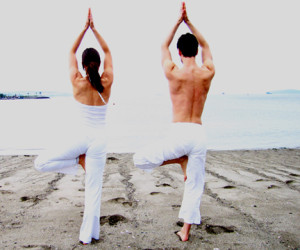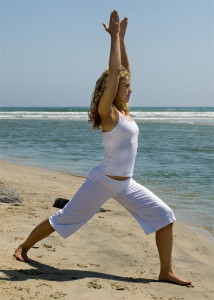“Biological brains are first and foremost the control systems for biological bodies. Biological bodies move and act in rich real-world surroundings.”
– Clark, A (1998)
Most of us lack a little of both balance and flexibility since we sit a lot during the day and rarely challenge ourselves in these two areas. Yet, science has shown that how we use our bodies has a great influence on the health of our brains.
And one of the most important stimulus of brain health is balance.
The connections in the brain which seem to weaken with aging and effect movement are in the cerebellum. One of the main functions of the cerebellum is to help you balance. When you must stand on one leg, bend and pick up an object, it is the cerebellum that coordinates the muscles. The more you sit and the less you challenge your balance, the less the cerebellum does. The synaptic connections gradually fade away like old paint.
What can you do to strengthen the connections in the cerebellum? Practice activities that require balance.
You can start with something as simple as balancing on one leg. Stand on one leg with your eyes open. Bend the non-weightbearing knee to 90 degrees. You should be able to balance on one leg for at least 30 seconds if you are between 20 and 59 years of age. From age 60-69, your time should be 22 seconds and beyond age 69, 14 seconds. Balancing forces the cerebellum to do its job and maintain vital connections as the years go by (to read more about how to improve brain function with aging, read Mozart’s Brain and the Fighter Pilot by Richard Restak).
I blend Yoga poses into some of the Balance & Flexibility Elements mostly because certain types of poses will initiate a very positive hormonal effect on your brain and body.
They make you feel more powerful.
Really.
Researchers examined the effect of different kinds of postures on people’s hormone levels, testosterone and cortisol, as well as their subjective sense of power and risk taking. They took samples of these hormone levels before and after exposure to certain positions or poses.
One group was given poses that created more expansion of the body: open arms, legs, chest. The other group was issued just the opposite: more constrictive positions where the arms were folded, legs crossed.
The result was that the group that held the more expansive postures had significantly elevated testosterone and lowered coritsol levels which are both very positive for your long term health. And, the group that held the more restrictive postures had just the opposite result.
And, in addition, the more expansive positions also correlated with more positive feelings of being powerful and willing to take risk.
Where to start? Two poses that I often use are the Warrior I and Tree Pose:

Start with assuming the poses and taking five, slow, deep breaths. For the Tree Pose, if you cannot place your foot above your knee, place it where you can and work your way up. Same for your arms. The arms over head position is a more difficult position to hold because it will shift the center of gravity. Try placing your hands together in front of your chest.
Once you can hold the pose for five, slow, deep breaths, alternate from one pose to the next. Your goal is two minutes (the time in the study that showed an increase in hormonal levels).

The very cool thing about your brain is that YOU can change it’s function and as your brain function improves, so does your MIND.
I wish I had thought of that design…
Are you practicing some balance regularly?
Reference:
Van Praag, H. (2009). “Exercise and the brain: something to chew on.” Trends Neurosci 32(5): 283-90.
Carney, D. R., A. J. Cuddy, et al. “Power posing: brief nonverbal displays affect neuroendocrine levels and risk tolerance.” Psychol Sci 21(10): 1363-8.


